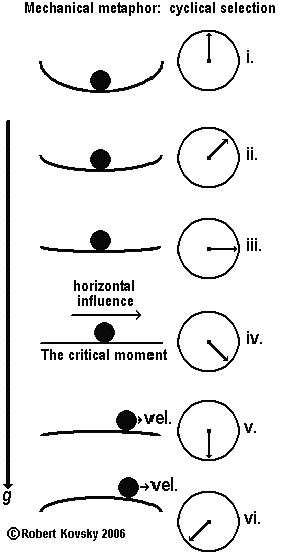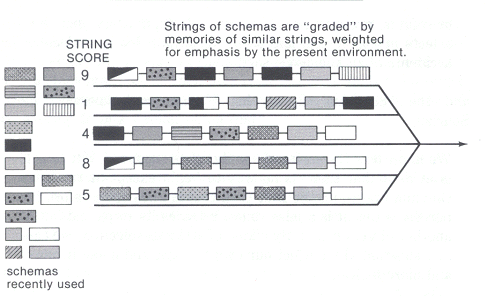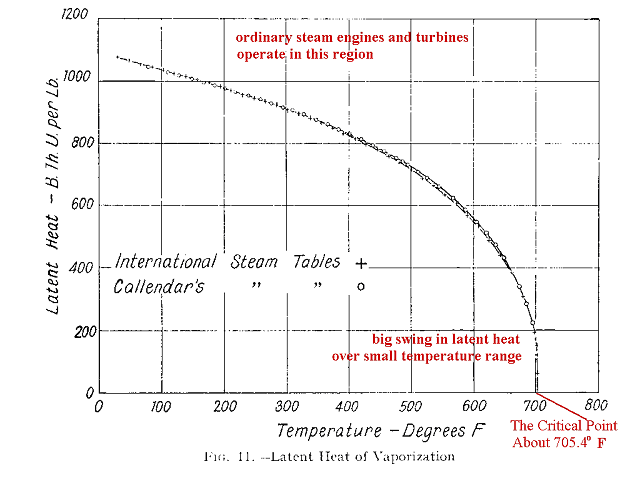As I interpret Calvin, there are large classes of activities that can be described by such modular units. Such activities include keyboard performances that run a span, at the least, from children's toys to a piano to computer programming. These activities all share common features that Calvin's railway metaphor highlights. For purposes here, the most interesting features revolve around the
hooks that fasten the metaphorical railway cars together. Metaphorically, hooks that connect railway cars identify a major question about brains.
Hooks between railway cars have two functions that oppose each other and that must be balanced. First, a hook fixes one car to another. Second, a hook allows for assembling and disassembling trains of cars. A heavy hook with a tight-fitting connection is best for permanent fixation, the kind of permanent fixation that will maintain the connection despite twisting and banging on a long journey. For quick assembling and disassembling, on the other hand, the hook should be light in weight and with a loose connection that is easy to slip. In contrast to heavy, tight, fixed hooks good for stressful journeys, hooks good for the inner railway yard are light and mobile.
Critical point principles applied to liquid water and steam show how a hook can vary between heavy/tight and light/mobile. At the critical point, liquid water and steam are indistinguishable and merge into a unique state, a kind of indeterminate goopiness where surface tension is zero and blobs of all sizes emerge, merge and dissolve incessantly. Another way of saying this is that, at the critical point, "no energy" is required to change liquid water into steam (or vice-versa) or that the "Latent Heat of Vaporization" is 0.
The following diagram from W. J. Kearton,
Steam Turbine Theory and Practice (5th ed. 1948) (comments in red have been added) shows the key feature for the system formed by liquid water and steam. This key feature applies to all critical point systems, based on the critical point principle of
universality. As the system approaches the critical point from a lower temperature, the "Latent Heat of Vaporization" falls to 0 very rapidly from a high figure. I am suggesting that something like the "Latent Heat of Vaporization" is the "hook" for connecting activity patterns involving neuronal groups. With just a small upward swing in temperature, so the metaphor goes, the hook can shrink from thick to thin, allowing for easy connecting and disconnecting of the units, before the temperature drops a bit, when the hook grows thick again and the connections become fixed. I suggest that repeated upward and downward swings of a temperature-like parameter in the region just below the critical point constitutes phasic cycling, where phases are merged, then separated, then merged again.




